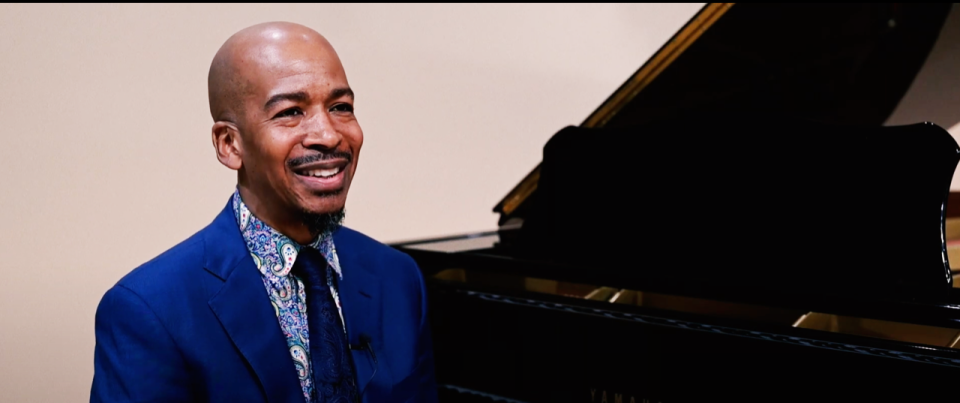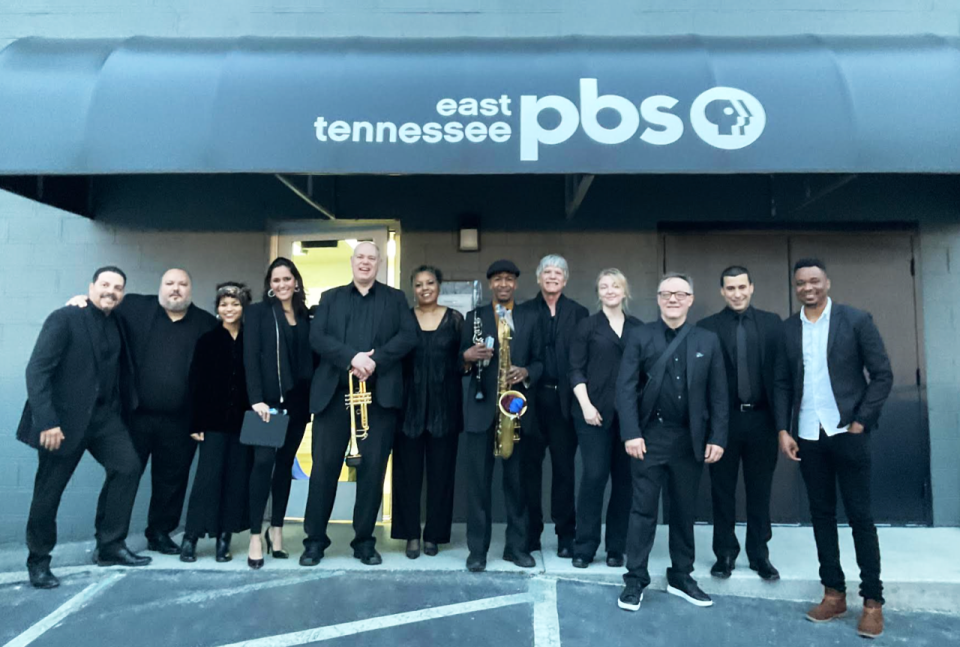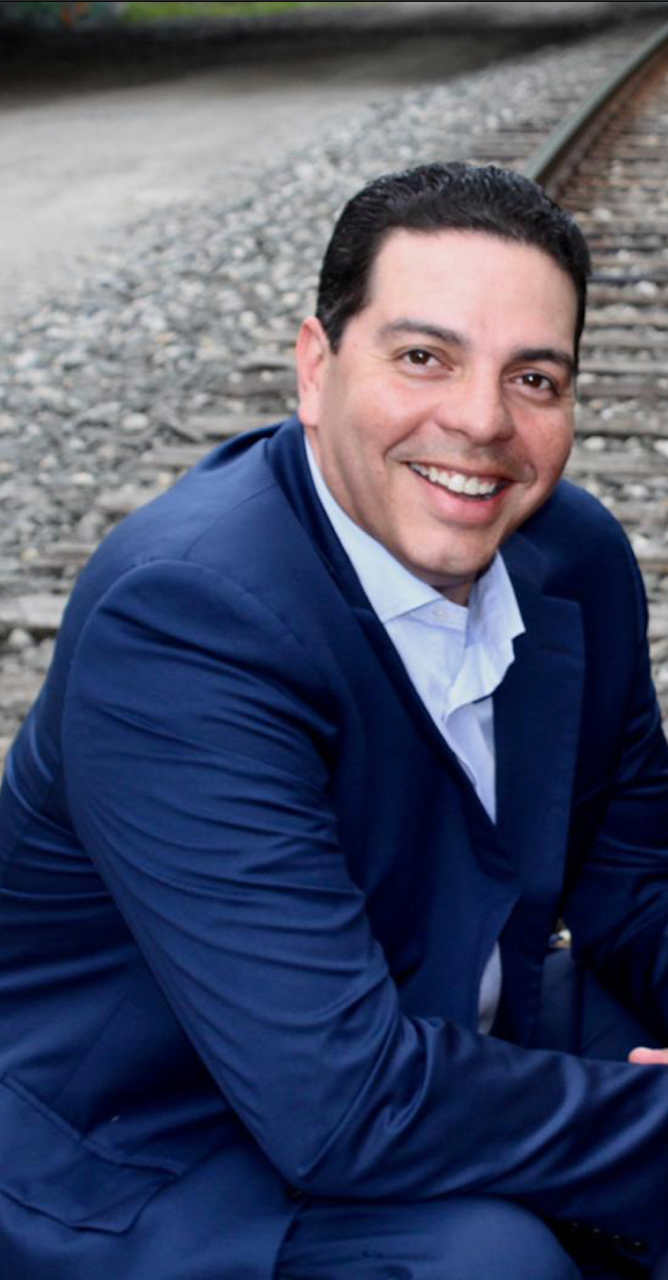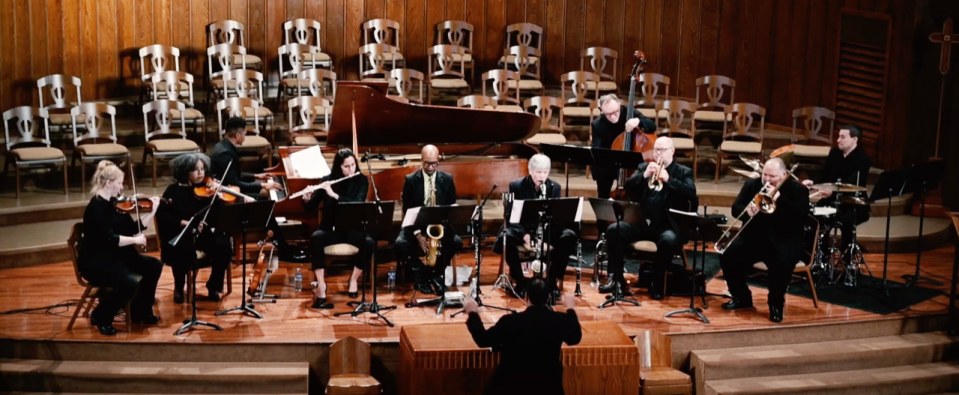A Pilgrim's Progress
In 1678, an Englishman named John Bunyan published the allegorical tale “A Pilgrim’s Progress, From This World to That Which is to Come,” in which he reworked Biblical histories, parables and revelations in a way that made them more easily digestible to the newly literate masses.

Bunyan’s tale made for an extremely popular and enduring template that, now in its fourth century, has securely attained “timeless” status. Appearing in print 60 years after the death of Shakespeare and nearly 100 years before the American Revolution, “Pilgrim’s Progress” has influenced hundreds of artists over the generations since Bunyan’s time, from poets and playwrights to singers and satirists. And it continues to do so, right up to Big Ears Festival 2023.

One artist inspired by Bunyan’s pilgrim is a professor at the University of Tennessee's School of Music, one of the most gifted jazz saxophonists of his generation. His name is as succinct as John Bunyan’s.
Greg Tardy.
And if John Bunyan could shake off the 335 years of dust on his shoulders to hear how Greg Tardy has interpreted the journey from this world to that, he’d be an instant convert to jazz music.
A few years ago, Prof. Tardy was turned onto the genre-bending potential of “Pilgrim’s Progress” in a small study group at his church, influenced mostly by the seemingly endless cast of characters in the tale, which has come down to us essentially unchanged. Bunyan’s protagonist, Christian, relates a dreamt sojourn to free himself from the burden of sin, from the awareness of sin, which hung on him like a backpack. The burden was physical, not symbolic. It wasn’t an emotion. It was a sack of rocks.
The characters Christian meets, a study in opposites, both facilitate and frustrate his steps toward his goal, which he immediately realizes may or may not be reached. With names ranging from Faithful, Prudence, Charity, and Civility, to Timorous, Mistrust, Hypocrisy and Beelzebub, every step closer to the Shining Ones is challenged, tested, and expensive. It’s life, after all.
Allegory or not, faith is faith, and the opposite of faith is not doubt. The opposite of faith is epistemic certainty, and that’s not a character encountered by Christian. Along the path of the pilgrim’s progress, the shape of faith changes radically at every twist and turn in the road, and I guess we can assume the music accompanying the trek changes likewise.
Enter Greg Tardy, a bona fide jazz pilgrim, who has set out to show Bunyan that the journey has not ended. The characters accompanying the pilgrim Saxophone are named Trombone, Viola, and Piano. Their direction giver, discreet and unfailing, is named Stabilito. They are joined by Trumpet, Flute, Bass Clarinet, Violin, Bass, and Drums, and their path is both charted and improvised.

Tardy’s journey has been more prepared than the one taken by Bunyan’s Christian. Saxophone gathered his fellow travelers right from the beginning, and they set out as a band. With highly sought-after Jazz Road backing from the South Arts Path of Resilience initiative, funded by the Doris Duke Foundation and Andrew Mellow Foundation, with the support of the Knoxville Jazz Orchestra, the pilgrims gave the first account of their journey a year ago on “Live at Lucille’s” on East Tennessee PBS. In two weeks, the Greg Tardy TenTet will perform the second leg of their journey at the Big Ears Festival, March 31, at 2 p.m. at the Old City PAC on State Street, around the corner from West Jackson Avenue.
Jazz Road. Path of Resilience. Pilgrim’s Progress. It all adds up.
“There’s a certain road in life most people walk on because it’s familiar, and they can jostle to get in front. I prefer to take a different road that’s less crowded, with many forks where you get a wider view of life. I call it the road less traveled. That’s where I want to be.” {Wayne Shorter}
Trombone is Michael Dease, winner of the 2022 Annual DownBeat Magazine Poll for Trombonist of the Year, and professor of jazz trombone at Michigan State. There are several Grammy Awards on his bookshelf for being a brilliant soloist, sideman, band leader, composer and arranger. He has an international reputation as the “Best Next Thing,” which also happens to be the title of his latest record, a study of the essence, the truth, and the nexus of Jazz and the Blues, capital J, capital B. Tardy calls Michael Dease one of the best jazz trombonists in the world, and with a tinge of amazement, he adds, “Michael has the virtuosity to play trombone like it’s a saxophone.” Off the chain.
Trumpet is Alex Norris. From Betty Carter’s Jazz Ahead to the Mingus Big Band, Alex Norris’s associations are a Who’s Who of rhythm-forward, freedom-ringing jazz masters, including Slide Hampton, Brad Mehldau, Joshua Redman, John Patitucci, Paquito D’Rivera, Chico O’Farrill, Ron Carter, Brian Blade, and now Tardy. There are moments in “The Journey” when the power that builds between Dease and Norris is absolutely astonishing.
Bass Clarinet is Tom Johnson, instructor of music at Pellissippi State for nearly 30 years. In the fifth section of “The Journey,” when the pilgrims approach the Valley of Death, he steps out solo and leads everyone in the theater and everyone on the stage across what feels like a stretch of ice so thin and so perilous, we could drop through and disappear in a second. The suspense is then subsumed in improvised chaos.
Viola is Kimberly Simpkins, a classical artist and educator who is one of the people who make Knoxville so unique as a musical mecca.
"Knoxville is one of the few places in the country where the arts are doing well,” she wrote in a blog post explaining what she called her epic journey to graduate school, 20 years after her bachelor’s degree in violin performance from the University of North Carolina. There’s that word again ... journey. “It has been quite a journey to get here ... emotionally, spiritually, musically ... I have no doubt that I’m in the right place.”
Violin is Karen Kartal, concertmaster of the Oak Ridge Symphony Orchestra and professor of violin at Pellissippi State. Kartal amplifies the striking presence of Oak Ridgers who are making their artistry felt at this country's premier music festival, joining Ellen Reid and Edgar Meyer to prompt the question people have asked for more than 75 years … "What is going on in Oak Ridge?"
Drums is Dave Potter, a favorite of the great pianist and band leader Marcus Roberts. He holds two degrees from Florida State, a very tattered passport from gigs around the globe with the Jason Marsalis Vibes Quartet, and a discography print-out as long as my arm. In the “Doubting and Re-routing” section of “The Journey,” when the metaphorical train careens off the tracks, it’s a drum-solo-driven wreck of Biblical proportions. Potter’s drum kit sits directly in front of Norris and Dease, which is sort of like being on a bicycle with two Freightliner semis 10 feet behind you, and you never see him sweat.
Bass is Sean Conly. This guy is all over the map, perhaps the most eclectic and voracious appetite in contemporary jazz. He owns the best press quote I have ever read for any musician in any genre anywhere at any time or place: “Sean Conly has a pizzicato so thick you could climb it.” (New York Jazz Record) In this ensemble, every person on stage is on his or her own journey, and you see it on every solo turn. That makes it all the more attention-grabbing when any two of the 10 weave their steps together. Conly and Piano, Conly and Flute, Conly and anybody on stage are a heart-stopping pleasure.
Flute is Maria Castillo, who has graced numerous orchestras in the US, Mexico, and Venezuela, including the Caracas Municipal Symphony, the Philharmonic Orchestra of the Americas, Venezuelan National Philharmonic, Miami City Ballet, the New World Symphony, Baton Rouge Symphony, Lake Charles Symphony, Louisiana Philharmonic, and the Knoxville Symphony Orchestra, to name a few. The New York Times says she plays with virtuosic panache, and Tardy says she’s a natural improviser. Assistant UT professor of flute, she is also co-founder of the Latin American Music Initiative. In the fourth section of “The Journey,” when the pilgrim’s burden unexpectedly falls off his back, Flute announces this new freedom in a duet with Piano, in as pretty a tune as you’ll ever hear, an almost Sondheim-like aerial ballet.
Piano is Taber Gable. A graduate of the University of Hartford and the Juilliard School, Knoxville’s Gable is a fascinating artist with the world at his feet. If there is anyone who embodies Hallerin Hill’s “Anything is Possible,” it’s Taber. His touch at the piano is definite and authoritative if not yet definitive. It’s not that he’s this or that. It’s that he can be anything he wants to be as a pianist. And in “Pilgrim’s Progress,” he can range from serene and saintly to dirty and desperate.
Saxophone is Tardy. The composer of “The Journey” used the full retreat of the COVID-19 pandemic to meditate on Bunyan’s “Pilgrim’s Progress” and process it through what was going on around the world, with civilization on the verge of panic. He told me “I just wrote what I heard.” He said that before I listened to the Suite. After I’d listened, those simple words left me speechless. “I just wrote what I heard.” When he plays what he heard, it can part the Red Sea.
Tardy reminds me of the James Webb telescope somehow. If you read Ornette Coleman or Miles Davis or Charlie Parker’s thoughts on the nature of American jazz, you get the Copernican view of that Cosmos, then the Galilean view, then the Hubble view. But when you listen to Tardy, suddenly, by orders of magnitude, the structure, depth, and order of the Universe become breathtakingly clearer. Every previous view feels clouded, myopic, and inadequate. The more you see, the more you can appreciate how little we know. Our mercurial Creator will never be pinned down.
Tardy didn’t hear Satan’s slick temptations. He didn’t hear the Heavenly hosts. He heard the music of 10 jazz messengers. And like the other Gospels, it is liberating.
The pilgrims are assisted by two helpers. One is Tardy’s daughter, Abigail, who narrates introductions to each of the Suite’s sections, roughly organized along the lines of Bunyan’s original. Abigail, who just turned 18, exudes the confidence of a torchbearer, reassuring the travelers that, whatever is around the bend, they will surely reach their goal.
The other assistant is Maria Castillo’s husband, Régulo Stabilito. Maestro Stabilito (who Greg calls Reg) is the newly-appointed conductor of the Oak Ridge Symphony, and it’s clear to me that a revolutionary new chapter in this town’s cultural life has just begun. Guest conductor for orchestras across Latin America after earning a doctorate at the University of Michigan, Reg is in his element in front of a 90-piece orchestra, but I had to ask what it’s like to face a 10-piece jazz band.
“I’m privileged to have the best seat in the house, up close to these great musicians. But with all these stars in front of me, I ask myself, ‘What am I doing here?’” Greg immediately answered that question. “I could tell halfway through our first rehearsal that I needed two or three more of me if we were going to get this together.” That’s when Maria said, “Hey, my husband is a conductor.” And in performance at Big Ears, you will see in Stabilito an amazing fusion of two worlds – the improvisational liberation of jazz, and the circumspect discipline of classical music.

Stabilito told me Tardy's composition touches every listener, independent of their religious beliefs. And he knows the pilgrim’s progress is not finished. He’s already contemplating how to realize the full orchestration of “The Journey.”
It’s clazzical.
The heart of this adventure lies in something Castillo wrote to me. She is an exemplary artist, from a strict conservatory background, an orchestra member first and foremost from a cultural tradition that doesn’t exactly encourage winging it. But in her undergrad years at the University of Michigan, she took classes in improvisation and fell in love with jazz.
“I saw a concert by the Dave Holland Big Band and heard incredible compositions performed at the highest level of musicianship. I wished right then that I played the tenor sax. That’s why, when I heard Greg’s music, I couldn’t believe he asked me to be part of an ensemble performing the kind of music I always admired.
“Greg has written a very powerful work. The music is hard, but it’s fun to be part of a project marked by such excellence, in the writing, the creativity, and the performance. I get to share the stage with incredible musicians, and even though I’m not a jazz musician, it’s an honor to play a part in Greg’s creative process," she said.
That’s the Big Ears Festival. No one has to be urged to get out of their comfort zones. There aren't any.
John Job is a longtime Oak Ridge resident and contributor to The Oak Ridger.
This article originally appeared on Oakridger: A Pilgrim's Progress

